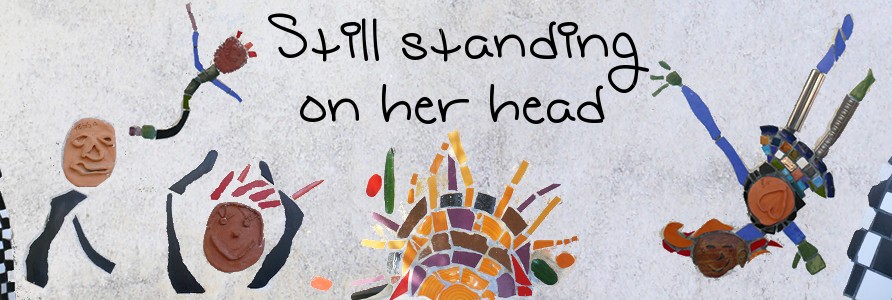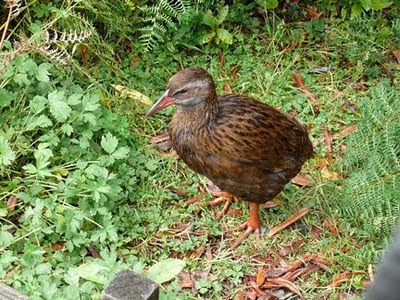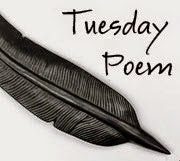The title of this post was the heading on a review of a local anthology of prose and poetry in The Press, the main Christchurch newspaper. It had me spluttering in my morning coffee.
I haven't read the anthology, but I do have an idea of what it contains, having seen the submission guidelines, and flipped through the finished book. The reviewer seems to be breaking what I understood to be a fundamental rule of reviewing, that you review a book for what it is. You don't complain of a science fiction novel that it is not a romance, or of a book of light verse that it fails to follow modern semiotic techniques (whatever they might be). This reviewer, instead of actually reviewing the poetry, jumps on his soapbox:
How strange that the poetical traditions of rhyme and thythm, which go back well over six centuries ...seem to have disappeared without trace. He then says
Of course, I am not maintaining that rhyme and regular rhythmic patterns are necessary for poetry which seems to me to be a bit of a cop-out, given that he fails to review the poems on any other basis than their lack of thyme and rhythm. Further, he suggests that
it is not particularly difficult for any reasonably literate person to produce this kind of thing. That comment seems to me not only to disparage most contemporary poetry, but also prose. If poetry becomes easy to write once presented in irregular lines with no rhyme, then surely he is saying that prose is easy to write too? He gives no recognition to the fact that not all sequences of words produce the same effect and that words have to be chosen equally as carefully for their sound and meaning whether they are presented as prose, unrhymed unmetrical verse, or rhymed and metrical poetry.
As I said in my earlier post on the poets of 1951, I began to feel that at that point the tradition of rhymed verse had reached a dead end. One of the reasons that the rhymed verse of 1951 sounds so much less modern to me than the unrhymed verse is that the unrhymed version makes much more use of normal speech rhythms, or at least something that could pass for it. The poets who still wrote in rhyme and meter still seemed to use some of the old techniques of inverting normal word order to make it fit. It's the "Procrustean" technique - if it won't fit the form, chop it about and rearrange it until it does. (
Procrustes, apparently, was known for chopping or stretching his guests to make them fit the bed).
Besides Denis Glover, reviewed in my previous post, I read
Adrienne Rich's first published collection "A Change of World" and
Mary Stanley's "A Starveling Year". The latter was a 1994 reprint - she attracted little attention in her time, and it was republished, with additional poems, at a time of renewed interest in some of New Zealand's earlier women writers. The original was published in 1953, but it went to the publisher in 1951, so I stretched the rules. It was her only published work, whereas Adrienne Rich, of course, went on to have a long and distinguished career.
Checking over the two books, I find that Rich for the most part does not use inversion of word order. Mary Stanley sometimes does. Overall, there are fewer examples than my first impression - which goes to show how strongly the technique colours our impressions of a poem - invert the word order and it immediately stands out as being what the traditionally-minded seem to think of as "poetic".
For example
I by all my imperfections stand accusedthe water-walking god in greed
exploratory fingers thrustsOther passages, while staying with normal word order, nevertheless sound very formal:
put off constricting day (Would you invite your husband to bed with those words?)
Cut off by tides we here are islanded
also by time and graver circumstanceWhen contemporary poets, rarely, choose rhyme and metre, it sounds different. There is often more use of enjambment. The rhymes may be slant rhymes. They manage something far more difficult than what was expected of earlier generations of poets - they make the lines sound much more like everyday informal speech, so that the rhyme and metre seem to intrude less. It's difficult to do. When it comes off, it's lovely - some of my favourite contemporary poems are rhymed. (And it's not that I don't like the old ones - I do, but I wouldn't expect a modern poet to write like Keats or Hardy or Frost, any more than I would expect a modern novelist to write like Jane Austen or Charles Dickens.)
Here's a recent example of rhymed verse at the Poetry Daily website - look for the abba rhyme scheme.
And one more thing - rhymed poetry, particularly poetry that concludes with a rhyming couplet, just sounds so damned sure of itself. In today's more complex world, it's not always appropriate to end a poem with what seems like a declaration that "I know this, and that's that!" A poet who wants to end "well, perhaps..." will find it a lot easier to do so without rhyme.


















